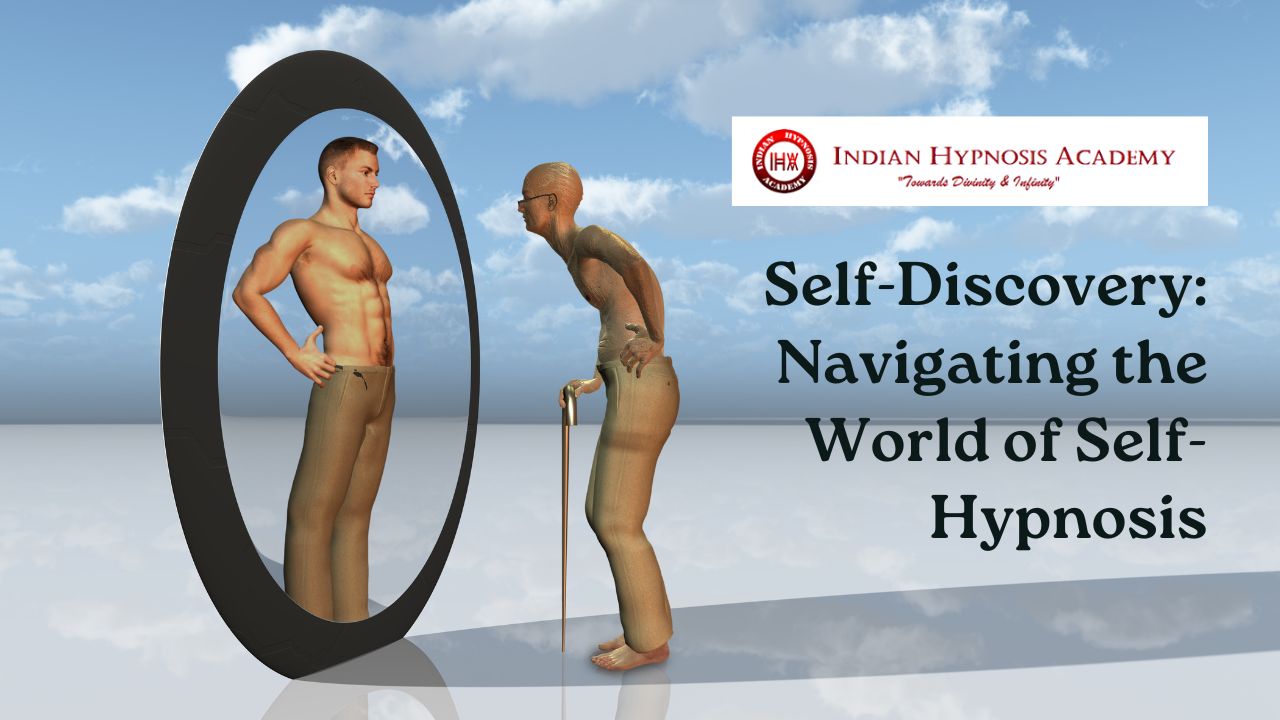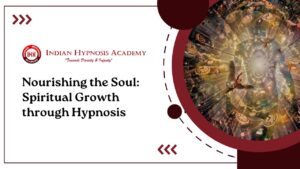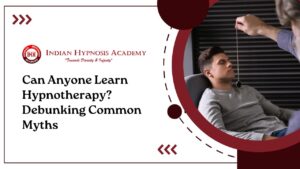Unlocking the power of your mind and taking control of your own thoughts and behaviors may sound like something out of a science fiction novel. But with self-hypnosis, it’s not only possible, but also within reach for anyone willing to explore this fascinating practice. Self-hypnosis is a technique that allows you to tap into the depths of your subconscious mind, bringing about profound changes in beliefs, habits, and personal growth. In this article, we will delve into the world of self-discovery through self-hypnosis and explore how you can navigate this transformative journey. So sit back, relax, and prepare to embark on an adventure within yourself!
Understanding Self-Hypnosis
Self-hypnosis is a powerful practice that involves inducing a state of deep relaxation and heightened focus to access the subconscious mind. In this altered state, you become more open to suggestion and can reprogram your thoughts, beliefs, and behaviors. It’s important to note that self-hypnosis is not about being controlled or manipulated by others; rather, it empowers you to take control of your own mind.
At its core, self-hypnosis is all about harnessing the power of your imagination. By creating vivid mental imagery and engaging all your senses, you can communicate with your subconscious on a profound level. This opens up opportunities for personal growth, healing emotional wounds, overcoming fears or phobias, enhancing performance in various areas of life – the possibilities are endless!
To enter into a self-hypnotic state, it’s crucial to find a quiet and comfortable environment where you won’t be disturbed. Set aside dedicated time for your practice when you can fully relax without any distractions. It may be helpful to dim the lights or play soothing background music to create an ambiance conducive to relaxation.
Once you’re physically comfortable, begin by focusing on slow deep breaths while releasing tension from each part of your body. Gradually bring yourself into a deeply relaxed state through progressive muscle relaxation techniques or guided visualizations.
As you delve deeper into the hypnotic trance-like state, visualize yourself achieving specific goals or affirming positive changes in your life. You might imagine yourself speaking confidently in public if that’s an area where you’d like improvement or envision letting go of past traumas as if releasing them into the wind.
Remember that practice makes perfect when it comes to self-hypnosis! The more frequently and consistently you engage in this technique – even just for 10-15 minutes daily – the better results you’ll achieve over time.
The Benefits of Self-Hypnosis
Self-hypnosis is a powerful tool that can bring about numerous benefits for individuals looking to explore their inner selves and make positive changes in their lives. By tapping into the subconscious mind, self-hypnosis allows us to access our deepest thoughts, beliefs, and emotions.
One of the key benefits of self-hypnosis is its ability to promote relaxation and reduce stress. Through guided imagery and deep breathing techniques, self-hypnosis helps calm the mind and release tension from the body. This can lead to improved sleep quality, increased energy levels, and an overall sense of well-being.
Another advantage of self-hypnosis is its potential for personal growth and self-improvement. By harnessing the power of suggestion, individuals can use self-hypnosis to reprogram negative thought patterns or behaviors that may be holding them back. This can help boost confidence, enhance motivation, and overcome obstacles on the path towards achieving goals.
In addition to psychological benefits, self-hypnosis has also been shown to have physical advantages. It has been used successfully in pain management by helping individuals increase their tolerance for discomfort or even alleviate chronic pain symptoms altogether.
Furthermore, many people find that practicing self-hypnosis improves their focus and concentration abilities. By entering a state of deep relaxation and heightened awareness during sessions, individuals may experience enhanced clarity of thought and increased mental acuity in other areas of their lives as well.
Incorporating regular self-hypnosis practice into your routine can have profound effects on both your mind and body. It offers a unique opportunity for introspection while empowering you with tools to shape your own destiny through positive change – all within your own control! So why not embrace this incredible technique today?
How to Prepare for a Self-Hypnosis Session
Preparing for a self-hypnosis session is crucial to ensure its effectiveness and maximize the benefits. Here are some simple steps you can take to prepare yourself:
- Find a quiet and comfortable space: Choose a peaceful environment where you won’t be disturbed or distracted. This could be your bedroom, living room, or even outdoors if it’s quiet enough.
- Set the mood: Create an atmosphere that promotes relaxation and focus. Dim the lights, light some candles, or play soft instrumental music to help calm your mind.
- Make yourself comfortable: Sit or lie down in a position that allows your body to fully relax. You may want to use cushions or blankets for additional support and comfort.
- Clear your mind: Take a few moments to clear any mental clutter by practicing deep breathing exercises or meditation techniques. Allow any stress or worries to melt away before starting the session.
- Decide on your intention: Determine what specific goal or issue you want to address during the self-hypnosis session. Whether it’s overcoming anxiety, improving confidence, or enhancing creativity, having a clear intention will guide your subconscious mind during hypnosis.
Remember that preparation is key when it comes to self-hypnosis sessions as it helps create an optimal state of receptiveness for positive suggestions and personal transformation.
Different Techniques and Methods for Self-Hypnosis
- Visualization: This technique involves creating vivid mental images to help induce a state of relaxation and focus. Close your eyes, imagine yourself in a peaceful setting, and allow the details of this scene to wash over you.
- Affirmations: Using positive affirmations can be an effective way to reprogram your subconscious mind during self-hypnosis. Repeat empowering statements such as “I am confident” or “I am capable” while in a relaxed state.
- Guided Imagery: Listening to pre-recorded audio tracks that guide you through various scenarios can be helpful for beginners or those who prefer external guidance during their self-hypnosis practice.
- Self-Talk: Engaging in positive self-talk while in a hypnotic state can help reinforce desired outcomes and beliefs. Speak kindly to yourself, focusing on goals, strengths, and personal growth.
- Progressive Muscle Relaxation: This method involves systematically tensing and releasing different muscle groups throughout the body, promoting deep physical relaxation alongside mental calmness.
- Breathing Techniques: Incorporating specific breathing patterns into your self-hypnosis practice can enhance relaxation and deepen the hypnotic experience. Focus on slow, deep breaths while counting each inhale and exhale.
Remember that everyone’s journey with self-hypnosis is unique; experiment with different techniques until you find what works best for you! Keep an open mind, have patience with yourself as you explore these methods, and enjoy the transformative power of self-discovery through hypnosis.
Common Misconceptions About Self-Hypnosis
There are many misconceptions surrounding the practice of self-hypnosis. Let’s debunk some of these myths and get a clearer understanding of what self-hypnosis is all about.
One common misconception is that self-hypnosis is a form of mind control or manipulation. This couldn’t be further from the truth. Self-hypnosis is simply a tool that allows you to access your subconscious mind and make positive changes in your thoughts, beliefs, and behaviors. It does not involve any external control or influence.
Another misconception is that only certain people can be hypnotized or benefit from self-hypnosis. In reality, anyone with an open mind and willingness to explore their inner world can learn and benefit from this technique. It doesn’t matter if you consider yourself “not susceptible” to hypnosis – everyone has the capacity to enter a hypnotic state and tap into their subconscious potential.
Some people also mistakenly believe that self-hypnosis requires special skills or abilities. While it may take some practice to master different techniques, anyone can learn how to use self-hypnosis effectively with time and dedication. There are plenty of resources available such as books, online courses, and guided audio recordings that can help beginners get started on their journey.
Furthermore, there’s a misconception that self-hypnosis is similar to sleep or unconsciousness. On the contrary, during a hypnotherapy session, you remain fully aware of your surroundings while being deeply relaxed in both body and mind. You are always in control throughout the process; it’s like entering into a focused state where you have heightened concentration on your goals.
Another common myth about self-hypnosis is that it produces immediate results without effort or commitment on your part. While incorporating regular sessions into your routine can yield powerful outcomes over time , it’s essential to understand that change takes patience and persistence . Like any other self-improvement practice, self-hypnosis requires consistent effort and
Tips for Success with Self-Hypnosis
- Find a Quiet and Comfortable Space: In order to fully immerse yourself in the self-hypnosis experience, it’s important to choose a quiet and comfortable space where you can relax without distractions. This could be your bedroom, a cozy corner of your living room, or even outdoors if that helps you feel more at ease.
- Set Clear Intentions: Before starting your self-hypnosis session, take some time to set clear intentions for what you hope to achieve. Whether it’s reducing stress, improving confidence, or overcoming a specific fear or habit, having a clear goal in mind will help guide your subconscious mind during the process.
- Practice Deep Breathing: Deep breathing is an essential technique to induce relaxation and prepare your mind for self-hypnosis. Take slow, deep breaths in through your nose and exhale slowly through your mouth. As you inhale, imagine filling yourself with positive energy; as you exhale, release any tension or negativity.
- Use Visualization Techniques: Visualizing desired outcomes can enhance the effectiveness of self-hypnosis. Create vivid mental images of yourself achieving your goals or experiencing the positive changes you desire. Make these visualizations as detailed and realistic as possible to engage all senses.
- Repeat Positive Affirmations: Incorporate positive affirmations into your self-hypnosis practice by repeating empowering statements silently or out loud while in a relaxed state of mind. These affirmations should reflect the changes and improvements you wish to make in yourself.
- Be Open-Minded and Trust the Process: Self-hypnosis requires an open mind and a willingness to trust in the power of suggestion. Let go of any doubts or skepticism and allow yourself to fully embrace the experience. Remember, your subconscious mind is highly receptive to suggestions during this state.
- Practice Consistently: Like any other skill, self-hypnosis takes practice to master. It may take some time for you to see significant changes or improvements, so be patient and consistent with your practice. Set aside time each day or week to dedicate to self-hypnosis.
- Stay Hydrated: Drinking plenty of water before and after your self-hypnosis session can help increase the effectiveness of the technique. Staying hydrated helps keep your mind and body functioning optimally, making it easier for you to enter a relaxed state.
- Seek Professional Guidance if Needed: While self-hypnosis can be a powerful tool for personal growth, it’s important to seek professional guidance if you have any underlying mental health issues or concerns. A trained hypnotherapist can help guide you through the process and address any potential challenges that may arise.
- Believe in Yourself: Believing in yourself is crucial for success with self-hypnosis. Trust that you have the ability to make positive changes in your life and that self-hypnosis is a valuable tool to help you achieve those changes. With determination, consistency, and a positive mindset, you can experience great success with self-hypnosis.
Incorporating Self-Discovery into Your Self-Hypnosis Practice
Exploring the depths of your subconscious mind through self-hypnosis can be a transformative experience. It not only allows you to tap into the power of suggestion but also provides an opportunity for self-discovery and personal growth. By incorporating self-discovery techniques into your self-hypnosis practice, you can unlock hidden aspects of yourself and gain valuable insights.
One way to incorporate self-discovery is by setting intentions before each session. Take some time to reflect on what you hope to gain from the experience. Whether it’s gaining clarity about a specific issue or uncovering limiting beliefs, clearly define your goals and visualize them during your hypnosis session.
Another technique is journaling. After each session, take a few minutes to write down any thoughts, emotions, or memories that surfaced during the hypnosis process. This will help you make sense of any newfound insights and track patterns over time.
Additionally, exploring different visualization exercises can aid in self-discovery during self-hypnosis sessions. Visualize yourself in different scenarios or engaging with various aspects of your life—relationships, career, health—and observe how these visuals make you feel.
Remember that practicing mindfulness is crucial when incorporating self-discovery into your hypnosis practice. Be open-minded and non-judgmental as you explore new ideas or confront old beliefs that may arise during these sessions.
By integrating elements of exploration and curiosity into your self-hypnosis practice, you create space for profound personal growth and understanding. Embrace this journey of self-discovery within the realm of hypnotic trance—a powerful tool for transforming your life from within!
Conclusion
In today’s fast-paced world, finding moments of self-discovery and inner peace can be a challenge. That is where the power of self-hypnosis comes in. By understanding and harnessing this technique, you can embark on a journey of self-discovery that has the potential to transform your life.
Self-hypnosis is a valuable tool for accessing your subconscious mind and unlocking its incredible potential. With regular practice, you can tap into your inner resources, overcome barriers, and make positive changes in various areas of your life.
Remember that preparation is key when it comes to self-hypnosis sessions. Create a calm and comfortable environment free from distractions. Set clear intentions for what you want to achieve through hypnosis and trust in the process.
There are several techniques and methods available for practicing self-hypnosis. From guided visualizations to affirmations, explore different approaches to find what works best for you. Be open-minded and experiment with different styles until you discover the ones that resonate with you most deeply.
It’s important to address common misconceptions about self-hypnosis as well. Understand that hypnosis does not involve control or manipulation by an external force but rather empowers individuals to take charge of their own minds.
To ensure success with self-hypnosis, consistency is key! Regular practice will strengthen your ability to enter a state of focused relaxation effortlessly and deepen your connection with yourself on an unconscious level.
Remember that incorporating elements of self-discovery into your self-hypnosis practice can enhance its transformative power even further. Use this opportunity not only for personal growth but also as a means of exploring who you truly are at your core.




